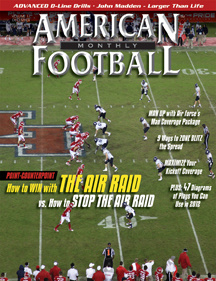Article CategoriesAFM Magazine
|
Speed Report Bring Your A Game Each Dayby: Dale BaskettFootball Speed Specialist © More from this issue Many coaches do not consider speed and movement training to have a critical impact on their players on a daily basis. As a result, they fail to give it the same attention and focus that they give to other areas of practice and training. Most great coaches would consider attention to detail and good time management as cornerstones of their success. Why, then, do so many coaches fall short when it comes to using speed training to develop their athletes? Why do they not apply the same purpose and understanding to speed and movement development as they do to other areas of practice and training? For whatever reason, coaches who dont bring focus to speed training are doing themselves a disservice. I travel throughout the country teaching football speed development. In my opinion, the methods and focus needed for success....The full article can only be seen by subscribers.
|
|
|||||||
| HOME |
MAGAZINE |
SUBSCRIBE | ONLINE COLUMNISTS | COACHING VIDEOS |
Copyright 2025, AmericanFootballMonthly.com
All Rights Reserved





